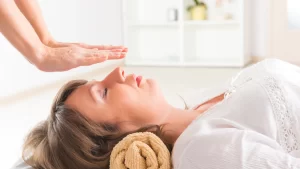
The Benefits of Cold Exposure
Cold exposure has become increasingly popular among health-minded individuals for good reason: it can help boost fat burning, protect nerves and strengthen the immune system.
Cold therapy after strenuous exercise is an effective way to alleviate pain and speed recovery. Cold therapy offers several advantages: 1. It reduces discomfort by blocking pain transmission between body and mind.
1. Reduces Muscle Soreness
Since antiquity, doctors have used cold therapies, commonly referred to as cryotherapy, to alleviate pain after exercise, injury or trauma. This approach may include using ice packs, bathing in cold water (or standing inside a cold chamber) or commercial cold sprays to achieve results.
Athletes have long taken advantage of ice baths as an after-game recovery tool to ease sore muscles. And while recent research may show otherwise, medical professionals and fitness enthusiasts still recommend them as part of recovery and performance-boosting routines.
Cooling down after exercise is beneficial not only to your muscles, but it can also alter how the brain perceives pain, helping reduce muscle soreness and stiffness. Cold causes blood vessels to constrict–known as vasoconstriction–reducing blood flow while simultaneously decreasing inflammation and alleviating pain. Once cold is removed from the equation, vasodilation occurs and blood moves back into the area to heal it more quickly.
2. Reduces Inflammation
Cold therapy can reduce inflammation in muscles, joints and tendons by decreasing blood flow to injured areas and decreasing swelling and pain.
Cold can help to numb an area and alleviate discomfort, while at the same time increasing nutrient flow to damaged tissues, aiding healing processes.
As athletes have done for years, submerging themselves in ice baths post-game to ease inflammation and soothe sore muscles has become increasingly popular among non-athletes following advice from Wim Hof (aka The Iceman) for possible wellness benefits of cold immersion bathing and breath work.
For those not ready to plunge themselves into freezing waters or undergo whole-body cryotherapy, cold shower therapy can also offer similar therapeutic benefits. Just be careful not to overexert yourself when applying cold therapy in order to protect skin and nerves from becoming damaged from too long an application of cold therapy.
3. Improves Circulation
Cold therapy enhances circulation by forcing your body into “survival mode.” At this time, blood vessels constrict to reduce blood flow to affected areas (known as vasoconstriction). This allows oxygen- and nutrient-rich blood to return to muscles, alleviating any lactic acid buildup which could otherwise delay recovery.
Cold temperatures help to numb sore muscles, providing temporary anesthesia while simultaneously inhibiting pain signals from reaching your brain. That is why athletes commonly utilize ice packs alongside RICE treatments as part of their at-home regimens.
Applying this therapy can be as easy as taking a cold shower or submerging yourself in an ice bath, but for maximum effectiveness consider investing in an immersion device that combines cold with compression – such as the Edge Tub! (Enter code Jon150 for $150 off!) Then get back out there and train hard!
4. Improves Sleep
Cold therapy has recently gained increasing attention thanks to Wim Hof, known as “The Iceman.” His practices combine breath work, cold water immersion, and commitment practices that some believe increase energy levels, boost immunity levels and enhance sleep quality. Proponents claim cold therapy improves energy levels while simultaneously increasing immune function and decreasing stress.
Cold plunges or showers stimulate your central nervous system to force blood vessels in your extremities to constrict, redirecting warmth back towards the core. This reduces cortisol levels while providing a relaxed state that’s conducive to sleeping better.
Localized cryotherapy methods like ice packs and coolant sprays are effective ways to decrease inflammation and pain around joints, muscles and tendons. If you want to incorporate cold therapy into your routine, make sure you consult your physician first and start slowly; for example, after experiencing cold plunge or shower sessions it’s advisable to wait at least 1-2 hours before sleeping for your body to adapt to its new lower temperature environment.


